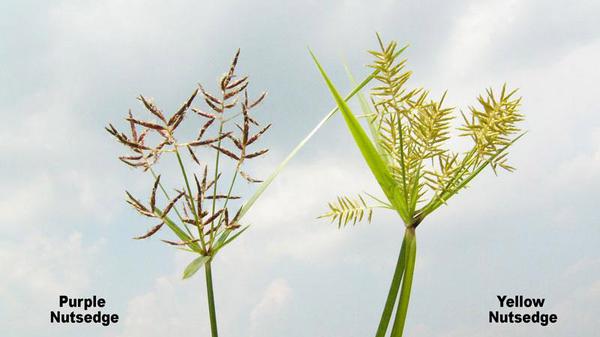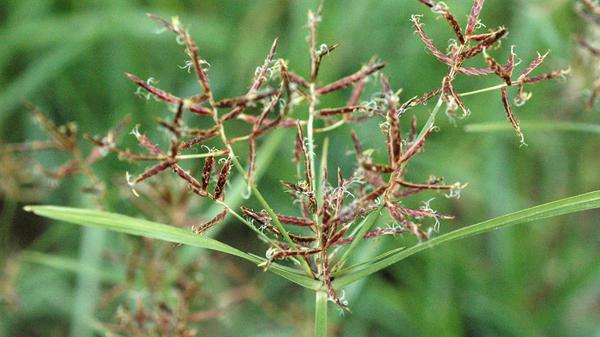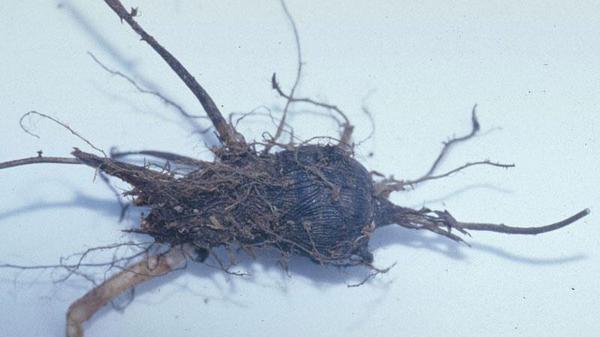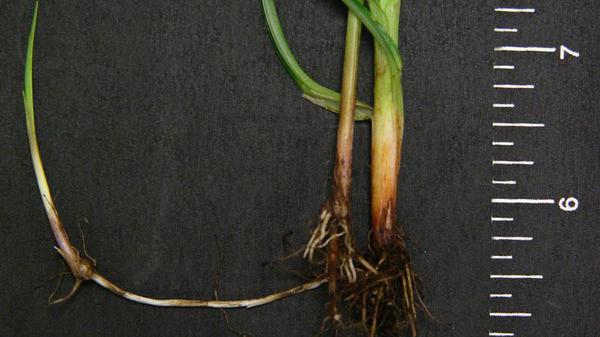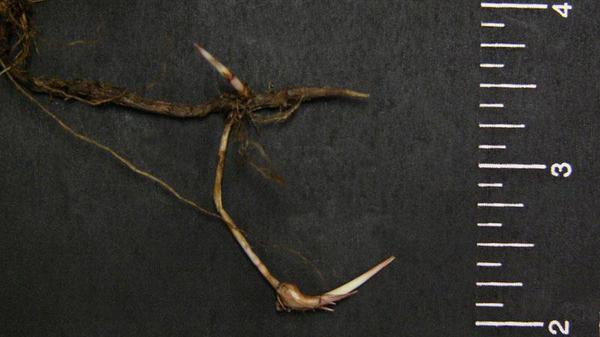Description
Purple nutsedge (Cyperus rotundus) is a native of India and is widely distributed in temperate and tropical regions of the world and is not as cold tolerant as yellow nutsedge. This weed tends to be more of a problem in warm-season turf. As with yellow nutsedge, purple nutsedge is a perennial that produces tubers on rhizomes. However, there are several ways the species can be distinguished from each other. Purple nutsedge produces tubers in chains connected by rhizomes, whereas yellow nutsedge only produces tubers at the tips of rhizomes. Purple nutsedge tends to have darker green leaves and produces a characteristic reddish-purple seedhead. The leaf tips of purple nutsedge tend to be blunter than those of yellow. This species is much more difficult to control than yellow nutsedge, so proper identification is important.
Cultural Control
It is important to properly distinguish sedges from grasses because management is totally different. Sedges are plants that thrive in wet or poorly drained soils but can survive in areas that are not wet. Because of frequent irrigation in highly maintained turf, sedges often thrive in the turfgrass environment. Sedges often become established in wet areas and spread to other areas that are not poorly drained or wet areas. Therefore, it is important to recognize areas where sedges can become established and prevent spread of these sedge species to other areas of the golf course or landscape.
Species Data
- Growth Season / Life Cycle
- perennial weed
- Seed Arrangement on Spikes
- Seedhead Spikelet Shape
- flattened
- Tuber Type
Publication date: Oct. 31, 2017
Recommendations for the use of agricultural chemicals are included in this publication as a convenience to the reader. The use of brand names and any mention or listing of commercial products or services in this publication does not imply endorsement by NC State University or N.C. A&T State University nor discrimination against similar products or services not mentioned. Individuals who use agricultural chemicals are responsible for ensuring that the intended use complies with current regulations and conforms to the product label. Be sure to obtain current information about usage regulations and examine a current product label before applying any chemical. For assistance, contact your local N.C. Cooperative Extension county center.
N.C. Cooperative Extension prohibits discrimination and harassment regardless of age, color, disability, family and marital status, gender identity, national origin, political beliefs, race, religion, sex (including pregnancy), sexual orientation and veteran status.



